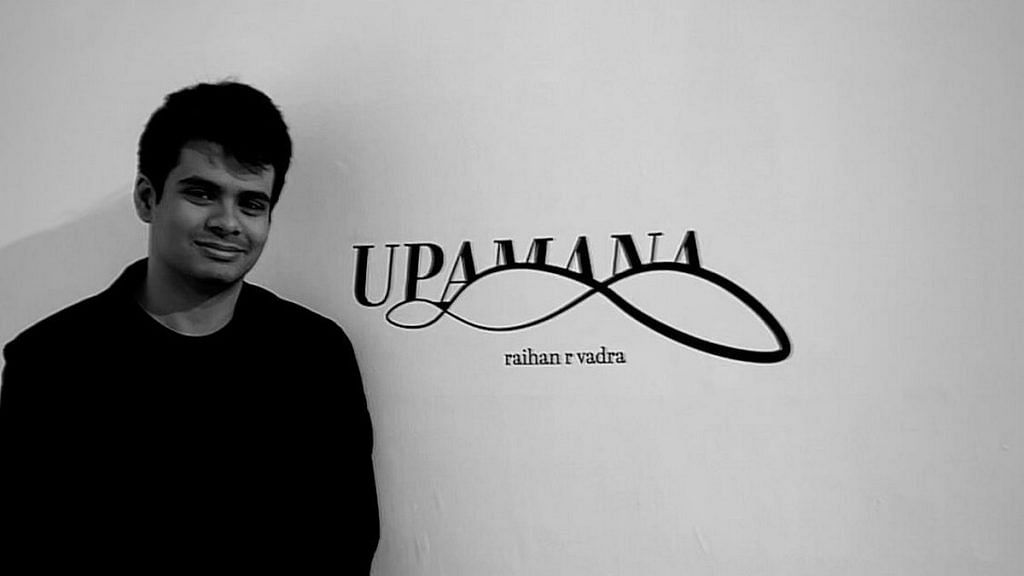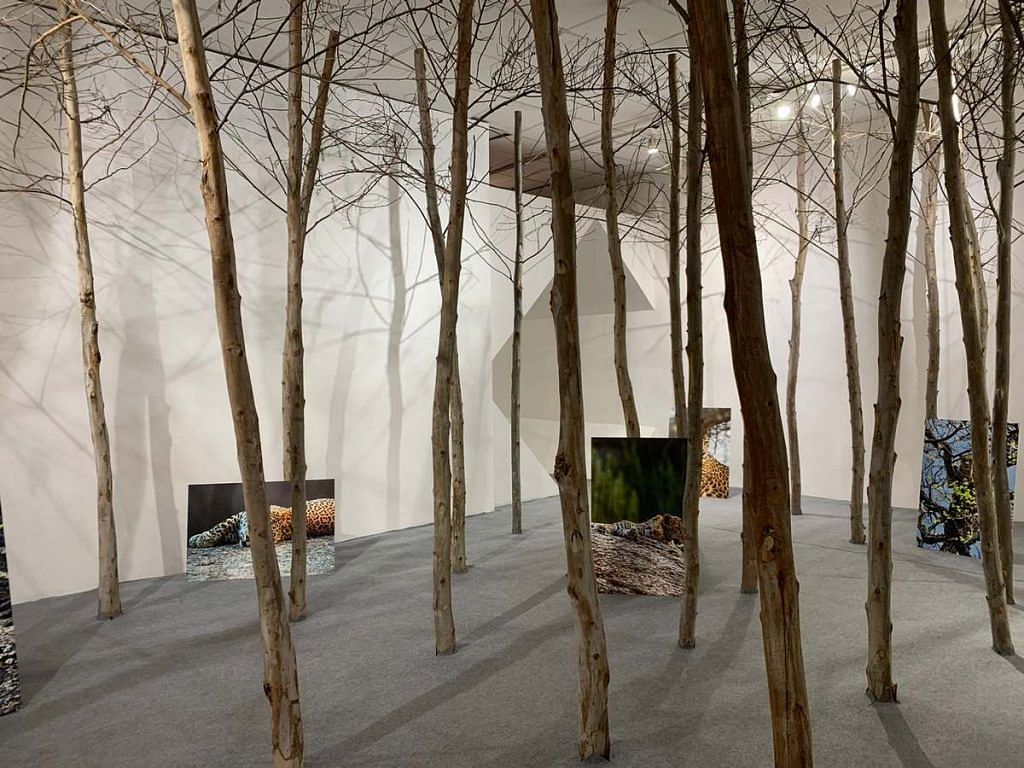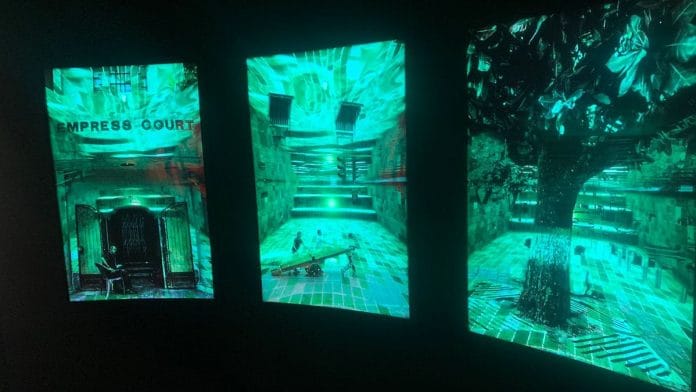New Delhi: Visual artist Raihan Vadra, who also happens to be the son of Congress politician Priyanka Gandhi and businessperson Robert Vadra, is no stranger to preconceived notions. His life has been a bit of a goldfish bowl.
This feeling of being under constant surveillance and judgement forms the subject of his third solo exhibition, titled ‘Upamana’, a Sanskrit term that refers to new knowledge arising from comparing something known with something unknown.
The installation exhibition creates an overwhelming sensory experience. Viewers are plunged into a dark room, designed to challenge their preconceptions, where neon, almost metallic photographs of the sky are on the ground. Inscriptions are few and far between, and the exhibition itself seldom offers answers.
What works in its favour is that it is a spectacle. There’s an element of surprise, and a certain grandeur in each section of the exhibition—which Vadra said took 10 months to complete.

“It’s derived from personal experience, but when my work comes out of that, I push the personal to the side,” Vadra said. “Anyone can relate to it.”
On display at Delhi’s Bikaner House until 4 February, the exhibition is one of the India Art Fair’s parallel programmes.
Also Read: Salman Rushdie to Orwell—banned books just found new life in art
Ever-watching eyes, escape in nature
The most intriguing aspect of the exhibition is perhaps its exploration of voyeurism, capturing a feeling of being under observation.
Upon entering the room, visitors encounter rows of eyes that seem to follow. The stark and unvarnished screen-mounted photographs create a distinct eeriness. Maybe you are being watched.
Art has the power to evoke emotions and provoke thoughts, much like the installations that challenge our perceptions. This is evident in how art can spark change and create dialogues about societal issues.

This unsettling sensation is both accentuated and reduced by a set of stylised, polished photographs of people engaged in regular, mundane activities—watching television, checking phones. Yet, they are all being watched.
Here, the personal and the universal coalesce.
“This exhibit is a little more personal. I’ve always had to be careful of what I can or can’t do in the public eye. I’ve always been judged, compared, and watched,” Vadra said. “It’s very pertinent to me.”
Just as he intends to challenge preconceived notions through the exhibition, Vadra claims people have also had to change their assumptions about him. According to him, a senior artist who visited the exhibition was surprised by the quality of the work.
His privilege, Vadra noted, is a double-edged sword. Certain things are much easier. But the Delhi art world, to which he now belongs, involves a fair bit of gatekeeping. “There are too many rules, too many strings,” he said. He works independently, occasionally collaborates with friends, and isn’t presently attached to a gallery.

Another section of the exhibition transports viewers away from the world of people—a jungle setting covered with actual tree trunks.
Leaning against the trunks are portraits of leopards. Each contains a specific intimacy and appears to have a different personality. Vadra has been photographing wildlife since childhood, and nature has always been one of his most crystallised sources of inspiration. “It’s the bulk of what I do, but not the bulk of what I exhibit,” he said.
(Edited by Asavari Singh)






